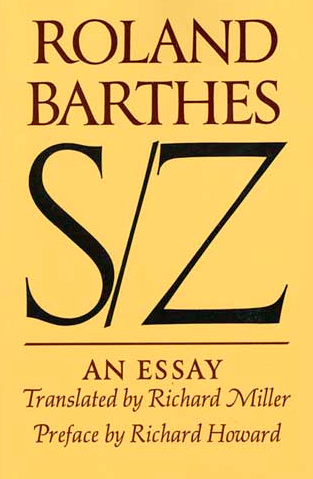Roland Barthes and Camera Lucida: Photography and Modernism

Barthes uses many different terms and concepts throughout Camera Lucida
The following notes take some of those terms and concepts and distills their meanings and intellectual heritage.
The notes you are reading should be used with additional information from Cultures of Vision
Classification
Barthes’s use of classification is not neutral. Rather, since so much of his intellectual work and history was bound up with semiotics he makes the assumption that to classify is not only necessary, but cannot be avoided: “we must surely classify, verify by samples, if we want to constitute a corpus.”
At the same time, Barthes asserts, there must be a system which guides this creation of structure and order. Ironically, Barthes talks about photography through the disorder which it creates because images cannot be classified as easily as other cultural forms.
Classification as an interpretive and analytical strategy is about bringing order to structure. Classification can be thought of as the creation of an inventory where the parts have relationships with each other. The task of interpretation becomes one of defining how those relationships work and whether they constitute a system with visible intentions. Classification also creates hierarchies, privileging some elements over others even when the inventory seems to be neutral. The point here is that the construction of a system of classification inevitably privileges some elements over others, inevitably privileges forms of structural organization which exclude as well as include the analytic categories chosen by the analyst.
Barthes conflates the way classification works to systematize meaning and relations of meaning with conventions. A convention can be defined as social and cultural — a cultural strategy to fix relations of meaning to permit and maintain social consensus.
The title of Barthes’s book is also a play on Camera Obscura and as such refers to the history of the medium of photography, to its origins as a technology which transformed the three-dimensions of the ‘real’ world into a flat, printed surfaces. The deliberate ambiguity of the term Lucida allows Barthes to look at photographs both for what they are, (he provides the reader with many descriptions and analyses of photographs and they punctuate his arguments throughout the book) and as triggers for bringing out the inner light of thinking and interpretation.
Camera Lucida plays with questions of lucidity and proposes no clear answers to the now commonplace arguments concerning the relationship between between photographs and reality. Suffice to say that Barthes’s book represents an important site of the intense debate about images and their role in the development of cultural theory, society and history. The personal nature of the book contributes to its significance as an exegesis in which the biographical, the historical and the pictorial come to represent the personae of Roland Barthes and his significance in the intellectual world. All of this has an effect on the language of the book which is alternately poetic and profoundly analytic.
So, for example, his reproduction of the term tuché is an attempt to use Jacques Lacan’s psychoanalytic theories to explain a moment of perception which exceeds the normal boundaries of everyday experience. This excess is at one and the same time an encounter with the self and with history. It moves the activity of viewing from a transparent relationship of meaning and expression to a level in which meaning seems to be there without all the conventional attachments that come with everyday linguistic use.
It is as if the photograph brings out the unconscious, is also a representation of the unconscious and at the same time denies all of these relations of meaning. For Barthes, this suggests that photographs create the conditions for a profound loss of meaning, an absence in which referentiality is removed although we still understand what we see. This contradiction IS the tuché!
Share this on Twitter
Email Ron Burnett


